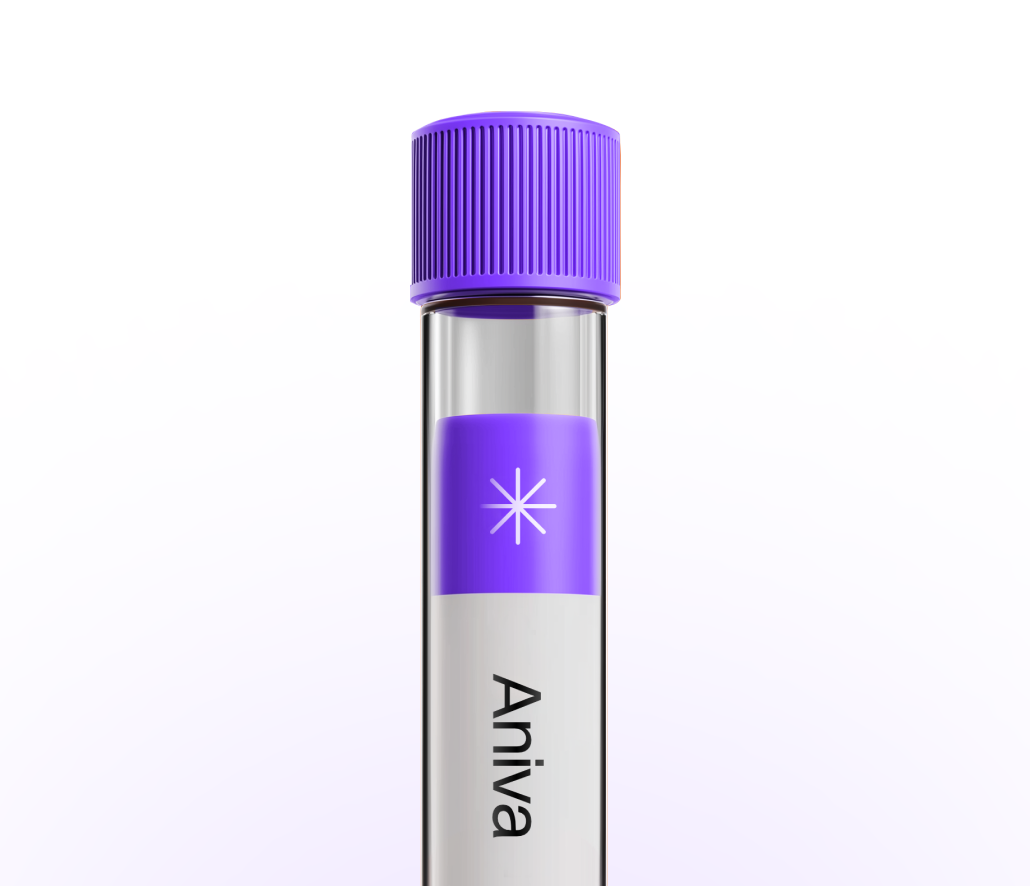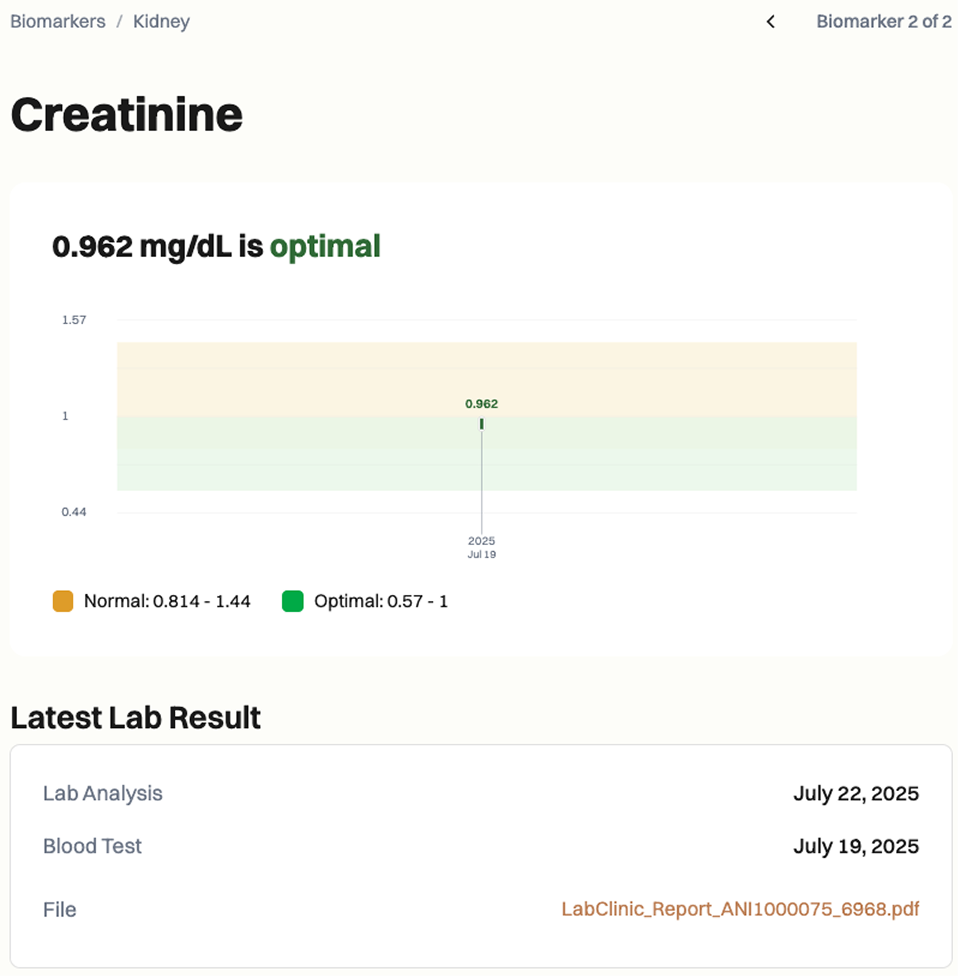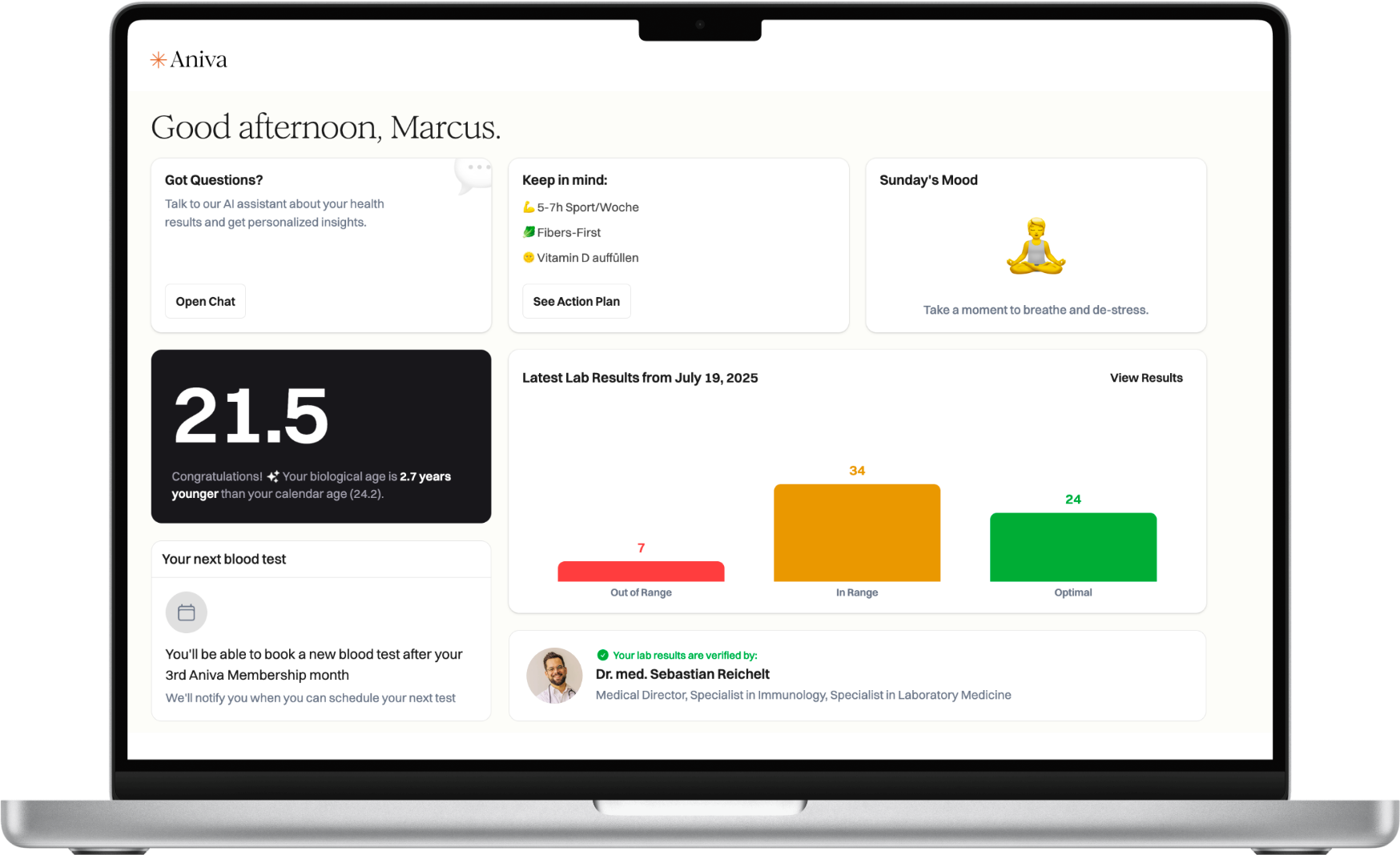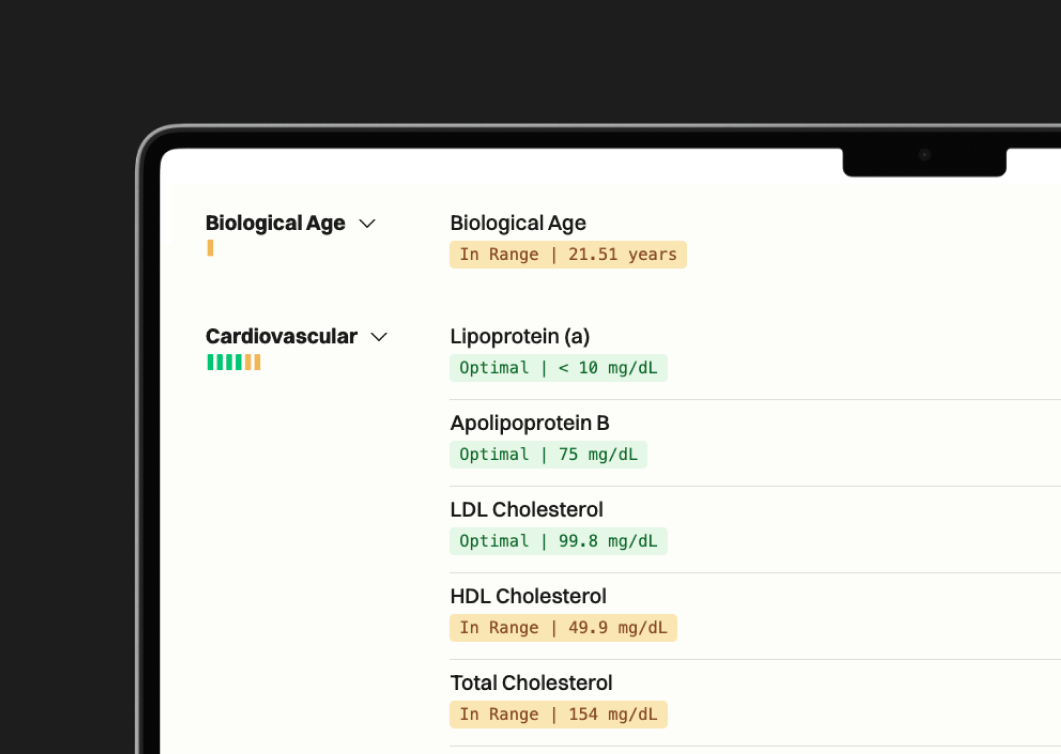The ALT/AST ratio compares two liver enzymes to add context to liver health.
Securely stored in EU
Cancel anytime
Test 100+ biomarkers

Less than 5 minutes waiting time. One
simple test at one of our 20+ locations.
Get your lab reports within one week.
Accessible on our app and per PDF.
All your health records stored
in a single, convenient place.

Clinicians use the ALT/AST ratio to interpret raised liver enzymes and spot patterns. It can hint if changes relate more to metabolic health, alcohol use, or possible muscle involvement. Results can guide next steps like repeating the test, checking other liver markers, or imaging. You can test this marker with Aniva across Germany and Finland.
Clinicians use the ALT/AST ratio to interpret raised liver enzymes and spot patterns. It can hint if changes relate more to metabolic health, alcohol use, or possible muscle involvement. Results can guide next steps like repeating the test, checking other liver markers, or imaging. You can test this marker with Aniva across Germany and Finland.
High: ALT is higher than AST. This pattern may fit metabolic liver stress (such as fatty liver), some viral causes, or acute liver cell injury. Consider reviewing medicines and alcohol, and discuss weight, activity, and metabolic risks.
Low: AST is higher than ALT. This can appear with alcohol-related liver stress, advanced scarring, or muscle injury; pairing with GGT and creatine kinase can help clarify. Avoid heavy exercise and alcohol for a day or two before retesting. This marker is not guideline-endorsed; no standardized cutoffs.



Common factors include recent alcohol use, vigorous exercise, muscle injury, certain medicines (for example, statins, acetaminophen, antibiotics), herbal supplements, pregnancy, dehydration, and sample hemolysis. Testing soon after an illness, injection, or at varying times of day can also shift ALT or AST and change the ratio.
Special situations: the ratio is less reliable when enzymes are normal or extremely high, or with muscle disorders, heart injury, pregnancy, or advanced kidney disease—confirm with a full liver panel and clinical review.
What does my ALT/AST ratio mean? A higher ratio means ALT is higher than AST; a lower ratio means AST is higher. Your clinician will interpret it with your other results.
Do I need to fast for this test? No. Fasting is not required for the ALT/AST ratio.
What can affect my result? Alcohol, hard workouts, muscle injury, medicines, supplements, pregnancy, and recent illness can change ALT or AST and shift the ratio.
How often should I test this? If abnormal, your clinician may repeat it in weeks to months, or sooner if symptoms change.
How long do results take? Most labs report results in 1–3 business days.
What should I discuss with my clinician? Ask how the ratio compares with ALT, AST, GGT, and your history, and whether any follow-up tests or lifestyle changes are wise.



One annual blood test (100+ biomarkers)
Clinician-reviewed insights
Personalized action plan
Access to our AI Concierge
Access to curated products


63%
44%
70%